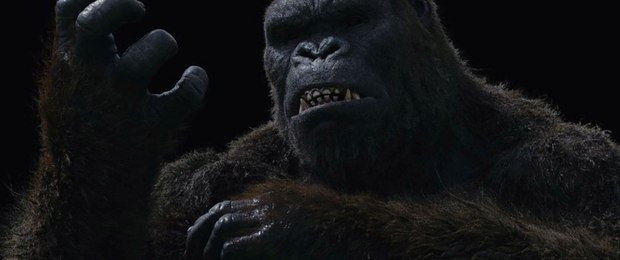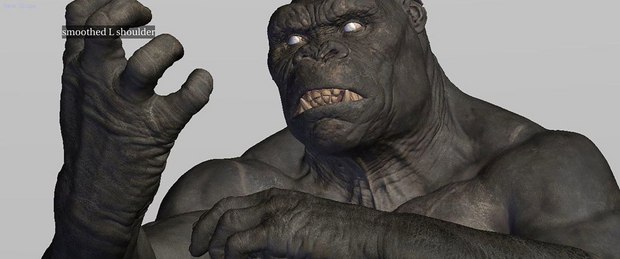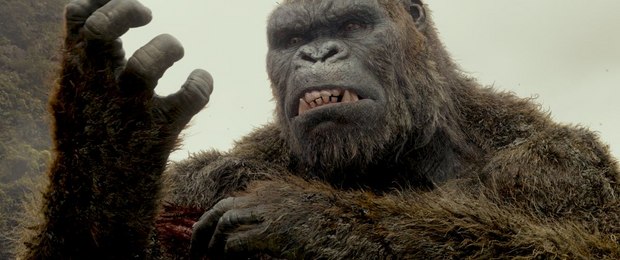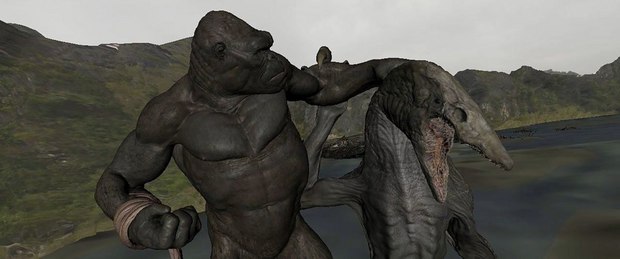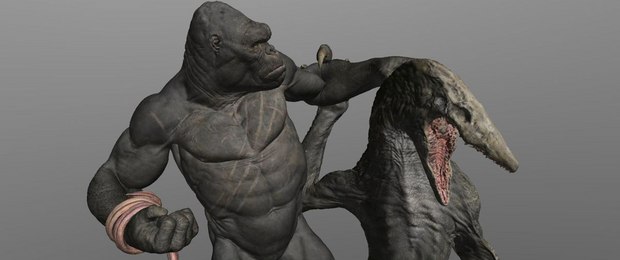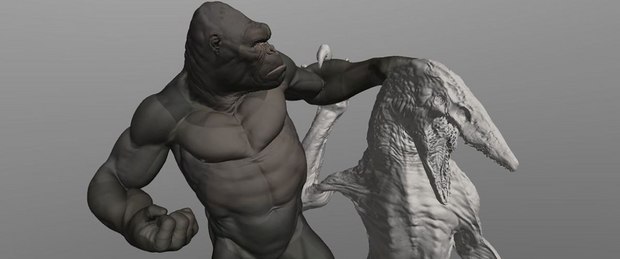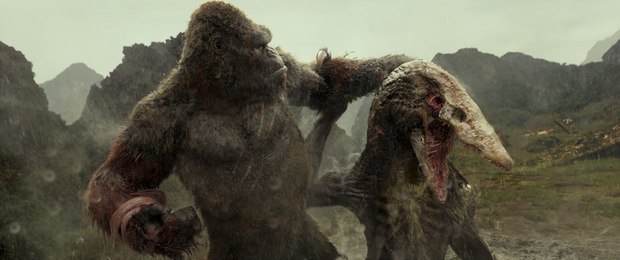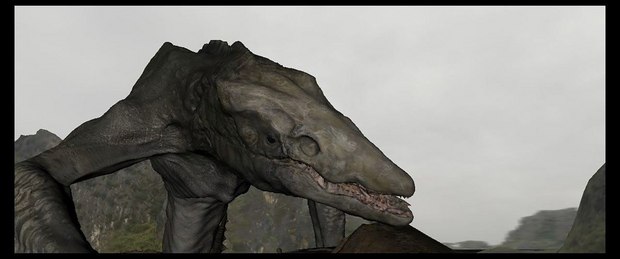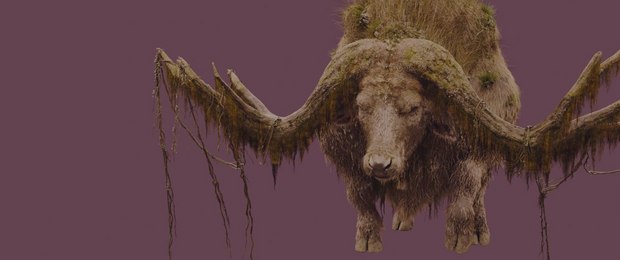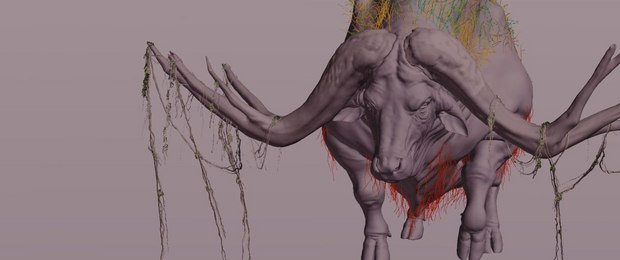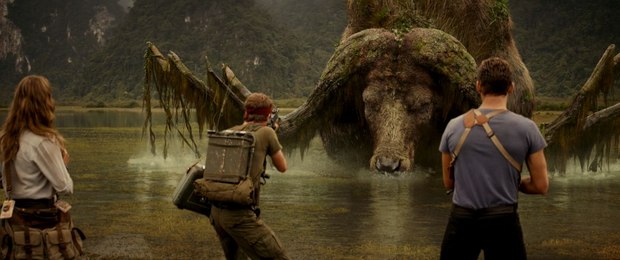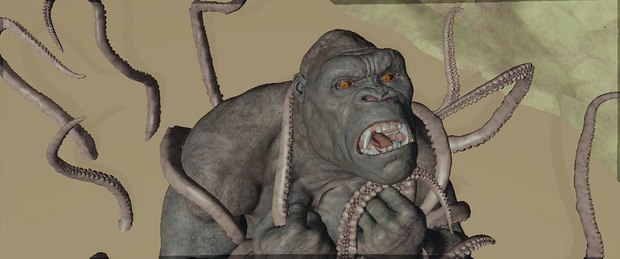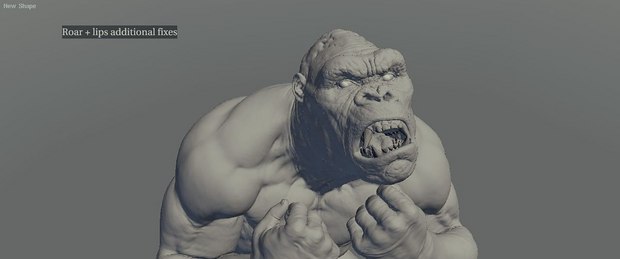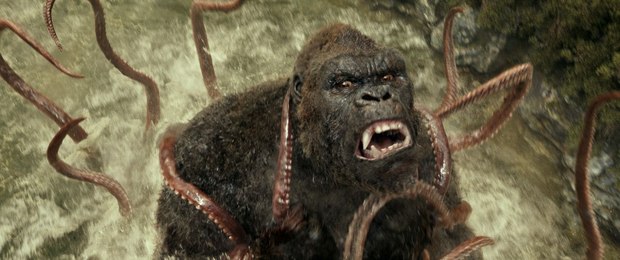Industrial Light & Magic animation supervisor Scott Benza discusses Warner Bros.’ latest take on one of Hollywood’s most iconic monster creations.

'Kong: Skull Island.' All images © 2017 Warner Bros. Entertainment Inc., Legendary Pictures Productions, LLC and RATPAC-Dune Entertainment LLC. All rights reserved. VFX sequence images provided courtesy of ILM.
Combining monsters and destruction is a dream project when it comes to visual effects production and for ILM, Kong: Skull Island was no exception. The film revolves around a group of soldiers and scientists exploring an uncharted island in the Pacific Ocean that is home to an iconic giant ape as well as other massive creatures not remotely receptive to the presence of humans. According to animation supervisor Scott Benza, ILM’s initial research was a bit off-track as filmmaker Jordan Vogt-Roberts (The Kings of Summer) had something different in mind for the title character. “We assumed we would be doing a realistic primate complete with its behaviours and look. However, the director told us that his Kong was going to be ‘an evolutionary offshoot’ somewhere between a gorilla and a human,” he recalls. “Kong never goes down onto all fours, which required a whole bunch more exploration as to how do we make it still feel like a gorilla but remain upright for the majority of the scenes. There was a lot of reference to the 1933 version of Kong that felt more like a monster than a traditional primate – you expect when a gorilla roars, their brow would furl, their eyes would squint, and then the roar would happen. But the 1933 version of Kong did the opposite. He went wide-eyed.”
Consequently, anatomical alterations were needed in order to make Kong bipedal. “There were some rigging changes that had to happen because an ape’s spine has more of a ‘C’ curve to it and sometimes when they stand up, they look rather uncomfortable because they have so much muscle on their backs,” notes Benza. “In order to accommodate for a fully upright gorilla, its spine and some of the muscle structure in its back needed to change a bit so that Kong felt ‘God-like’.”
Inventive solutions were also needed for Kong’s fur. Benza explains, “We went further with fur on this movie than we have done before as far as how much interaction with the environment was required. We had interaction with water, mud, fire and other creatures. We had to take all of those things we learned on other movies, with their independent technologies, and find ways to combine them.”
Kong’s size also impacted his fur. “When you think about Kong’s scale, he’s 10 to 15 times bigger than a traditional animal,” says Benza. “So, what does that scale factor do to his hair? If you had hair strands 15 times bigger than normal it wouldn’t look right. So, we had to balance how thick the hair needed to be in order to feel as if there was plenty of volume against making sure it didn’t look like a scaled up small creature.”
 Of particular challenge was getting Kong to emote without speaking. “We made the most out of the detail work in his eyes in order to convey to the audience what he’s thinking,” remarks Benza. “We didn’t want him to roar the same way every time. Nor did we want him to pound his chest in the same way. We were lucky enough to get a performance capture session with Terry Notary who has an awful lot of experience and is an expert on the motions and behaviors of gorillas.”
Of particular challenge was getting Kong to emote without speaking. “We made the most out of the detail work in his eyes in order to convey to the audience what he’s thinking,” remarks Benza. “We didn’t want him to roar the same way every time. Nor did we want him to pound his chest in the same way. We were lucky enough to get a performance capture session with Terry Notary who has an awful lot of experience and is an expert on the motions and behaviors of gorillas.”
Creative license was required in depicting how the protagonist would move. “If we were to follow true physics of a creature that is over a 100 feet tall, he would move much more slowly than would be entertaining or exciting to watch. But if you go too fast then it takes you out of the movie – finding the balance that gave us a sense of weight and believability while moving quickly enough to be exciting was a challenge,” Benza notes, adding that a more realistic approach was taken when deciding on the camera placement. “We always tried to keep the camera grounded at a human level so we combined those low angles with beautiful backlighting which helps his presence in the film a great deal.”
One of the many creatures Benza’s team had to animate was Kong’s chief adversary. “There were so many different influences that went into the design of the Skull Crawler,” Benza explain. “His claws are as much bird-like as the snout area. He is able to use the claws to get around quickly and as weapons against Kong. You have a juvenile scale creature that terrorizes the humans and the giant one that goes up against Kong at the end. The director wanted to have an iconic character design that was simple in nature, that kids could draw for their friends who would know exactly what that was just by how unique it is.”
The creature’s motion was influenced in part by crocodiles and alligators. Says Benza, “It wasn’t just animals that inspired the look but also Jack Skellington, a skeleton creature with iconic dark eyes and a skeleton head from the stop-motion animation movie The Nightmare Before Christmas.” Unique in the Skull Crawler design are the large sections of translucent skin. He continues, “A lot of times we would exaggerate the shoulder poses further than what was physically possible. But we had to dial those poses back so that when you looked through the skin, the abdominal structure was maintained properly underneath. The director added stripes later in the production because he wanted the Skull Crawler to have some level of camouflage while remaining distinguishable against Kong when they were fighting one another.”
Skull Island is also populated with water buffalo, spiders and squids. “We always try to find some kind of reference to base our animation on as the audience will relate to something they’ve seen before,” says Benza, who had to depart from reality to accommodate the design of the creatures. “Our water buffalo has enormous horns that would prevent the head from swinging around like a real one.” Executing tentacles are still difficult when it comes to CG as they lack a skeletal structure underneath. “Our character riggers like things that have structure and a mechanical nature to them because they are able to define limits and range of motion,” he continues. “However, with squid and octopus you open it up to anything that the animator wants to do. Spider legs are more forgiving in that you know how many joints there are and where they pivot from. It’s an example of camouflage influencing the design of the character. You’re not suppose to know what you’re looking at as the spider legs resemble bamboo.” In addition, the creature fights are not entirely digital. “Luckily we were able to shoot much of the movie with the live-action backgrounds because of the previs work that was done. It was well-planned out and was a helpful guide for the guys on set,” he concludes.
“There’s an interesting scene where the military helicopters have to punch through this storm that is surrounding the perimeter of the island,” Benza notes. “It was fully CG for the wide shots. There was some gimbal work for the close-ups, and we tried to fire the light effects on set in time with the lightning strikes to give us a cue for our environment work.”
More than most films, cinema history loomed over the project. As Benza describes, “Our biggest challenge was the fact that Kong is such a beloved character. We took as much care as we could with Kong’s performance.” Benza looks forward to seeing the battle between Kong and the Skull Crawler because of all of the artistic contributions ILM provided while creating the previs and storyboards for the scene. “It was a fun experience working with Jordan Vogt-Roberts and getting him up to speed as to how things work with visual effects. We had a great time on Kong: Skull Island and hope that people will enjoy the work.”
